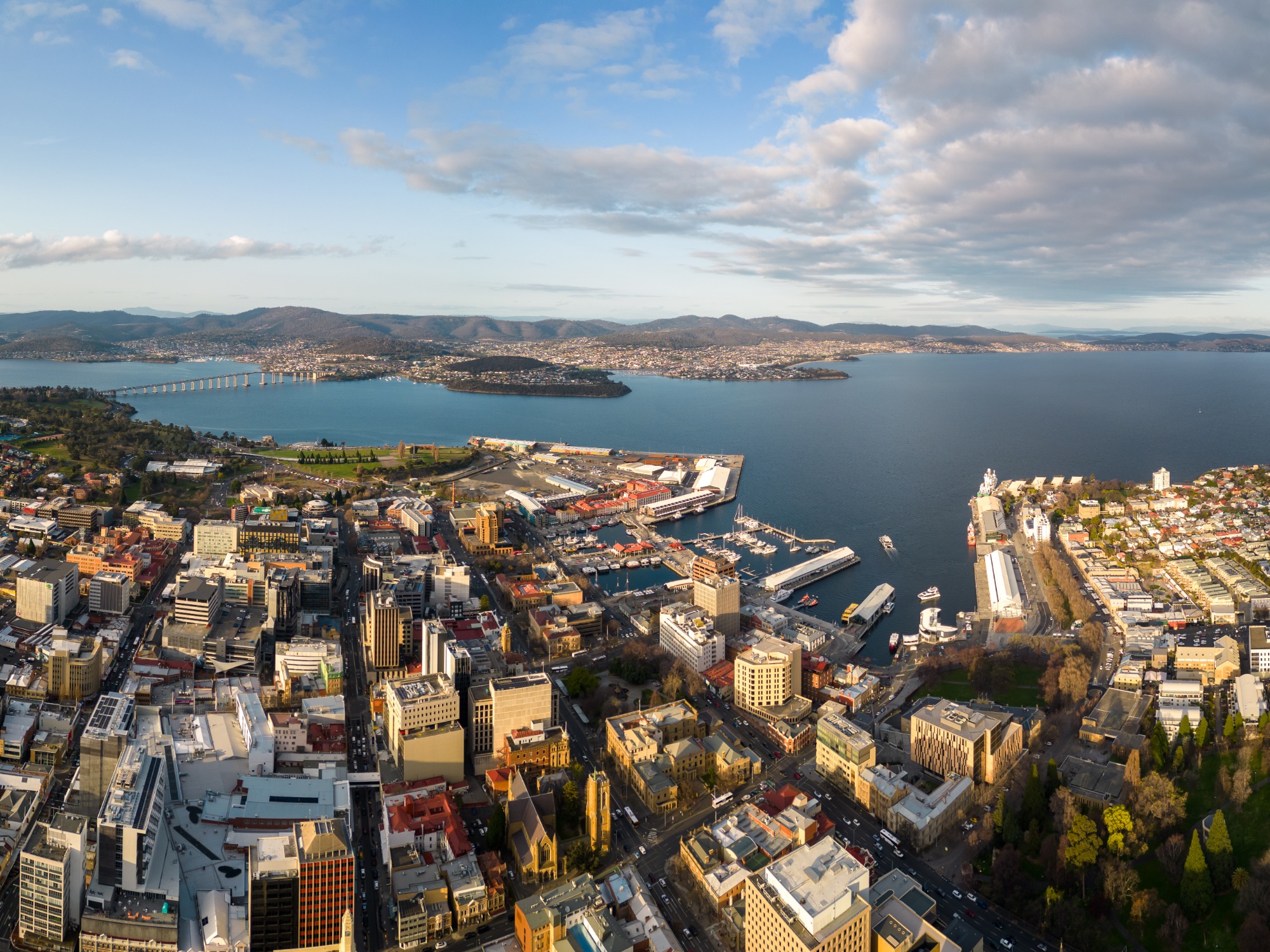A new poll shows that the majority of Tasmanians oppose the stadium proposed for Macquarie Point in Hobart. Alternative ideas for the site would devote much of the land to building homes.
The Australia Institute has released the results of a new poll showing that more than two-thirds of Tasmanians feel the stadium deal is “unfair” and want Parliament to stand up to the AFL.
A rendering of the proposed stadium, which would be home to the Tasmania Devils. Image: Macquarie Point Development Corporation
According to the survey of 842 voters, 69% of respondents agreed that “The AFL is treating Tasmania unfairly in its requirements for granting Tasmania a license to join the national competition”. Of the respondents, 21% disagreed.
Moreover, 69% also agreed with the statement that “the Tasmanian Parliament should renegotiate with the AFL to avoid building a new stadium,” while 27% disagreed.
According to the breakdown, more Labor voters than Liberal voters had negative responses to the stadium plan.
A site under scrutiny
The stadium was first proposed in 2022, as the Tasmanian government entered talks with the AFL to establish a new team in Hobart. A stadium located at the Macquarie Point site became part of the agreement through the negotiation process.
Controversy has courted the project since then. The site, which was once home to a gasworks as well as freight operations, was decommissioned and subject to a master-planning process in 2014-15 that would have seen the 9.3-hectare site developed into housing, commercial space, hospitality venues and community open space. But progress on the plans stalled, and then were shelved in favour of the stadium.
In 2023, the stadium proposal was declared a project of state significance, meaning that it could bypass some of the local planning processes, with the decision ultimately placed in the hands of the Tasmanian Planning Commission.
The project was a central theme in the 2024 state election, and has now become a hot button issue in the 2025 state election, which was called after premier Jeremy Rockliff faced a vote of no-confidence.
Both the Labor and Liberal parties have committed to continuing with the stadium development after the election, rather than risking losing the AFL deal to bring a team to the state.
The project is currently estimated to cost $945 million, with the majority to be financed by the state, with contributions from the federal government as well as the AFL.
The inner-city site earmarked for the stadium was subject to an earlier master plan that would have incorporated housing. Image: Getty
Is the stadium overshadowing the state’s need for housing?
Leanne Minshull, strategy director at The Australia Institute, said that based on the results of the poll, it was clear “Whoever wins the state election on July 19 must stand up to the AFL and stand up for Tasmanians.”
“This state deserves to have a team in the AFL, but Tassie taxpayers don’t want to be on the hook for a billion-dollar indoor stadium they don’t want.”
Meanwhile, the Housing Industry Association (HIA) stressed that the stadium should not steal focus from the state’s housing issues at such a pivotal time as an election.
HIA’s Tasmania executive director, Stuart Collins, commented: “It would be remiss of any party or candidate to focus solely on the stadium, when new housing is in such short supply and can help to create jobs and drive the economy”.
“With Tasmania rock bottom on HIA’s Housing Scorecard… now is the time to release land, stimulate housing activity and slash red tape,” he added.
The Tasmanian Liberal party has announced that if re-elected, the government will triple the current First Home Owners Grant to $30,000, reinstating it to previous levels. This government scheme is available to first-time buyers buying or building a new home.
With Hobart in need of housing, some groups have suggested the inner-city site has more important uses. Image: Getty
Alternative proposals preference housing
With so much attention fixated on the inner-city site, opinions have been strong about how the space should be used. Two groups have put forward alternative proposals, both of which include housing.
The Mac 2.0 Stadium Consortium, which is being promoted by former Tasmanian premier Paul Lennon, would still situate a stadium in the area but shift its location and make space for residential development, including social and affordable housing, as well as a private hospital. Estimated to cost over $2 billion, this plan is more than twice the cost of the current proposal.
Meanwhile, the group Our Place, championed by former Tasmanian governor Kate Warner, has put forward a plan that nixes the stadium in favour of housing for over 2000 Tasmanians, and would see the creation of an Indigenous Truth and Reconciliation Park.
Moreover, Greens senator for Tasmania Nick McKim has urged the federal government to redirect its $240 million commitment for the stadium towards housing instead.
“Tasmanians need a roof over their heads, not a roofed stadium that will wreck Tasmania’s economy,” he said.
Are you interested in hearing more about home building in Australia? Check out our dedicated New Homes section.

No responses yet